新概念英语第一册Lesson5教案
- 格式:doc
- 大小:27.00 KB
- 文档页数:2
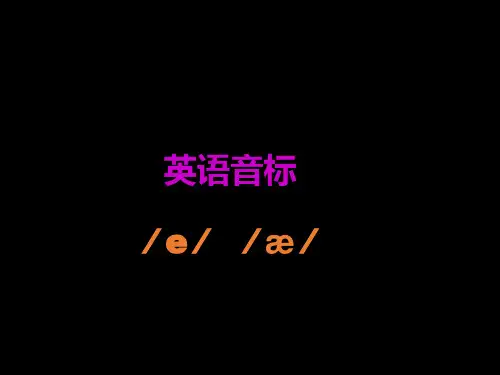
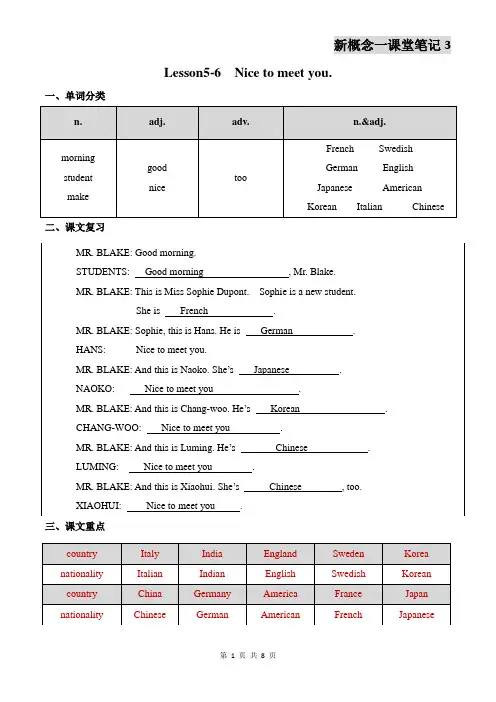

Lesson5 Nice to meet you.Lesson6 What make is it?1.Warm up & Lead inT: Hello, boys an d girls. Are you ready for the class?Ss:...T: Great! First, let’s watch a short video. After watching, please tell me what the video is about.A.A new lessonB. A new studentSs:...T: Which one do you choose?S: BT: Well done! The boy is a new student and he is a Chinese (中国人).2.Happy theater(开心小剧场)T: Today we will read a story about a new student too. Please watch the cartoon and try to answer the question.Is Changwoo Chinese?No, he isn’t.3.Word club (单词俱乐部)T: This story is interesting. Now let’s see the new words in the story. (呈现单词、音标、翻译、例句、单词讲解及形象化的图片)1)Listen and repeat<1> Mr. [ˈmɪstə] 先生Hello, Mr Brown. 你好,布朗先生。
Mr 是Mister (先生)的缩写,可以用于一切男子(不论婚否)的姓或姓名的前面。
<2> good [ɡʊd] adj. 好的This is a good book. 这是一本好书。
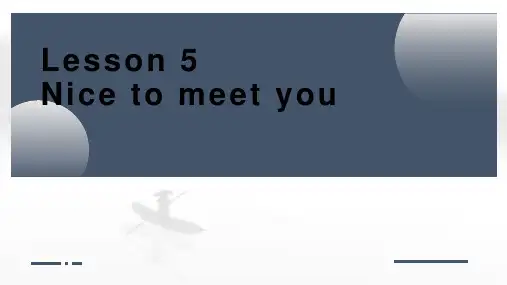
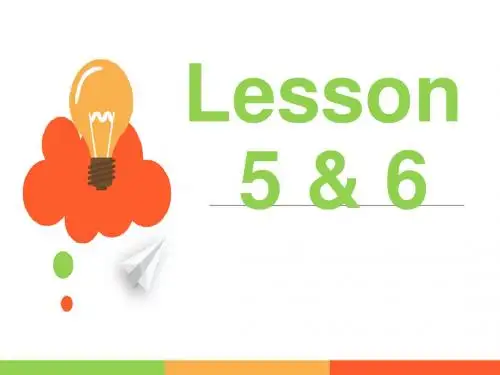
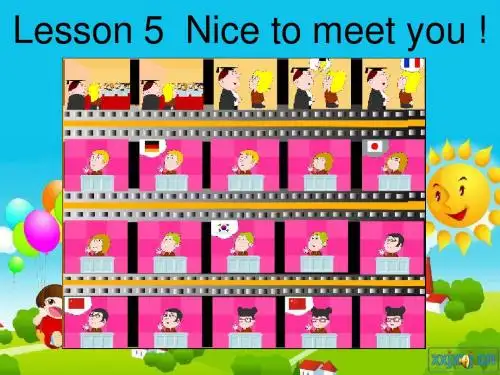
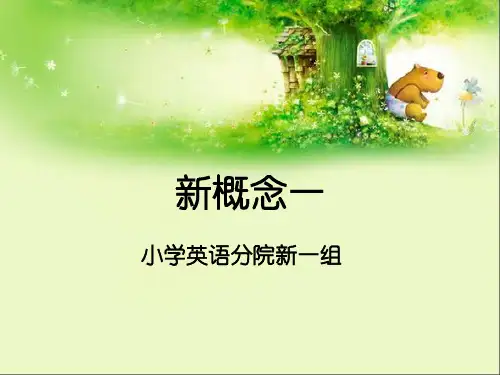

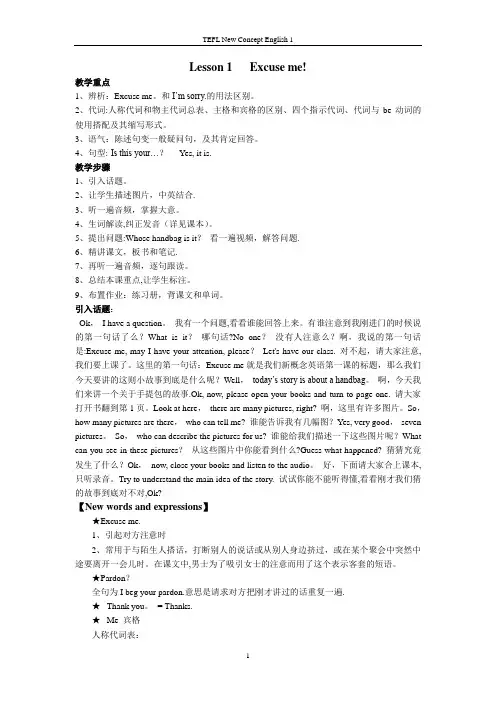
Lesson 1 Excuse me!教学重点1、辨析:Excuse me。
和I’m sorry.的用法区别。
2、代词:人称代词和物主代词总表、主格和宾格的区别、四个指示代词、代词与be动词的使用搭配及其缩写形式。
3、语气:陈述句变一般疑问句,及其肯定回答。
4、句型:-Is this your…?-Yes, it is.教学步骤1、引入话题。
2、让学生描述图片,中英结合.3、听一遍音频,掌握大意。
4、生词解读,纠正发音(详见课本)。
5、提出问题:Whose handbag is it?看一遍视频,解答问题.6、精讲课文,板书和笔记.7、再听一遍音频,逐句跟读。
8、总结本课重点,让学生标注。
9、布置作业:练习册,背课文和单词。
引入话题:Ok,I have a question。
我有一个问题,看看谁能回答上来。
有谁注意到我刚进门的时候说的第一句话了么?What is it?哪句话?No one?没有人注意么?啊,我说的第一句话是:Excuse me, may I have your attention, please?Let's have our class. 对不起,请大家注意,我们要上课了。
这里的第一句话:Excuse me就是我们新概念英语第一课的标题,那么我们今天要讲的这则小故事到底是什么呢?Well,today’s story is about a handbag。
啊,今天我们来讲一个关于手提包的故事.Ok, now, please open your books and turn to page one. 请大家打开书翻到第1页。
Look at here,there are many pictures, right? 啊,这里有许多图片。
So,how many pictures are there,who can tell me? 谁能告诉我有几幅图?Yes, very good,seven pictures。
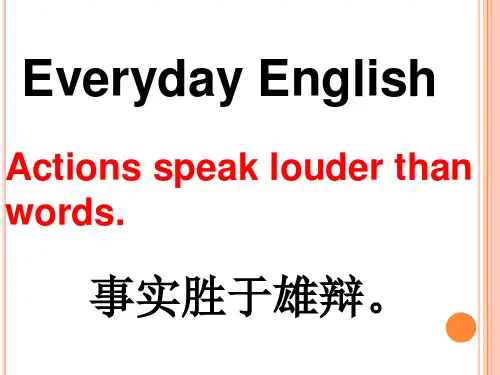
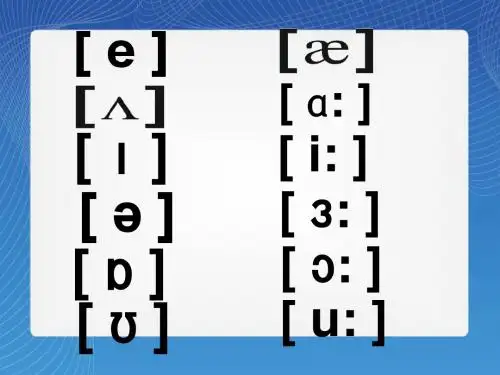
新概念英语| 第一册(Lesson 5)课文及学习笔记【课文内容及译文】Lesson 5 Nice to meet you很高兴见到你。
Listen to the tape then answer this question.Is Chang-woo Chinese?MR. BLAKE: Good morning.STUDENTS: Good morning, Mr. Blake.MR. BLAKE: This is Miss Sophie Dupont.Sophie is a new student. She is French.MR. BLAKE: Sophie, this is Hans. He is German.HANS: Nice to meet you.MR. BLAKE: And this is Naoko. She's Japanese.NAOKO: Nice to meet you.MR. BLAKE: And this is Chang-woo. He's Korean.CHANG-WOO: Nice to meet you.MR. BLAKE: And this is Luming. He is Chinese. LUMNG: Nice to meet you.MR. BLAKE: And this is Xiaohui. She's Chinese, too. XIAOHUI: Nice to meet you.布莱克先生:早上好。
学生:早上好,布莱克先生。
布莱克先生:这位是索菲娅.杜邦小姐。
索菲娅是个新学生。
她是法国人。
布莱克先生:索菲娅,这位是汉斯。
他是德国人。
汉斯:很高兴见到你。
布莱克先生:这位是直子。
她是日本人。
直子:很高兴见到你。
布莱克先生:这位是昌宇。
他是韩国人。
昌宇:很高兴见到你。
布莱克先生:这位是鲁明。
他是中国人。
鲁明:很高兴见到你。
表单说明:1,表(1-3):凡新签课程签署单的教师作为教学授课依据和凭证,纳入教学管理和考核范畴,各项按要求填写,此表单须在签约授课通知书前上交学校邮箱,以便学校对教师授课任务的审批及效果跟踪,感谢您的配合与支持!教学进度表:按各类班次的次数计,2-2.5小时为一次;周末班,每周按上午,下午各一次记录;晚班,每周按实际次数记录;全日制班,按每天上午,下午分别记录;授课进度表(表一)校区:公元前授课班级:一对一杨俊(新概念):2013 年4月13日----2013 年7 月27日(14 周)授课教师:郭苗苗授课教材、科目:新概念英语1、2 课程周数:14 次数:35次数日期课程进度内容备注1 4.13 新概念英语第一册73-78课2 4.14 新概念英语第一册79-84课3 4.20 新概念英语第一册85-90课4 4.21 新概念英语第一册91-96课5 4.29 新概念英语第一册97-102课6 4.30 新概念英语第一册103-108课7 5.11 新概念英语第一册109-114课8 5.12 新概念英语第一册115-120课9 5.18 新概念英语第一册121-126课10 5.19 新概念英语第一册127-132课11 5.25 新概念英语第一册133-138课12 5.26 新概念英语第一册139-144课13141516授课教师教案(表二)校区:公元前授课阶段:2013年4月13日------ 2013 年7 月27 日(14 周)教师中文名郭苗苗教师英文名Helen 授课教材新概念英语1学生人数 1 上课日期 4.29 要求:一次课按2--2.5小时课程授课教案授课任务时间:4 月29 日(5小时)授课任务为:新概念英语第一册97-102课互动环节设置1听课文录音,要求学生跟读。
2讲授同一词汇与不同介词搭配构成的不同意思,请同学造句3听偶数课文的音频,请同学回答问题.详细教案填写栏:要求:1请按教学大纲填写下表2符合班级整体学员情况;3不少于600字;4按个人实际上课的中英文运用比率陈述;第5次课一、教学内容及要求Lesson 97 - A small blue case & Lesson 98 - Whose is it? Whose are they? : The possessive pronouns(mine, yours etc.) are introduced here.Lesson 99 - Ow! & Lesson 100 - He/She/They say(s) that...: Noun clauses in which no tense change is involved are introduced here.Lesson 101 - A card from Jimmy & Lesson 102 - He says he.../She says she.../They say they...: The omission of that from noun clauses in which no tense change is involved.二、教学重点、难点及解决办法Lesson97-98:词汇:形容词性物主代词VS名词性物主代词。
新概念英语第一册mp3原文:Lesson 5 Lesson 5 Nice to meet you很高兴见到你Listen to the tape then answer this question. Is Chang-woo Chinese?听录音,然后回答问题。
昌宇是中国人吗?MR. BLAKE: Good morning.STUDENTS: Good morning, Mr. Blake.MR. BLAKE: This is Miss Sophie Dupont.Sophie is a new student.She is French.MR. BLAKE: Sophie, this is Hans.He is German.HANS: Nice to meet you.MR. BLAKE: And this is Naoko.She's Japanese.NAOKO: Nice to meet you.MR. BLAKE: And this is Chang-woo.He's Korean.CHANG-WOO: Nice to meet you.MR. BLAKE: And this is Luming.He is Chinese.LUMNG: Nice to meet you.MR. BLAKE: And this is Xiaohui.She's Chinese, too.XIAOHUI: Nice to meet you.参考译文布莱克先生:早上好。
学生:早上好,布莱克先生。
布莱克先生:这位是索菲娅·杜邦小姐。
索菲娅是个新学生。
她是法国人。
布莱克先生:索菲娅,这位是汉斯。
他是德国人。
汉斯:很高兴见到你。
布莱克先生:这位是直子。
她是日本人。
直子:很高兴见到你。
布莱克先生:这位是昌宇。
他是韩国人。
昌宇:很高兴见到你。
布莱克先生:这位是鲁明。
他是中国人。
鲁明:很高兴见到你。
Lesson5 Nice to meet you. 很高兴见到你。
一、教学任务:Back vowels & special question,特殊疑问句,及小词Nice to meet you.二、教学目标:1. 学生掌握特殊疑问句的结构及常用疑问词2. 会使用This is来介绍他人3. 掌握后元音的读音三、教学重点:后元音和特殊疑问句四、教学难点:特殊疑问词的掌握五、教学过程:1. Review the Phonetic alphabet2. Back V owels <发音时舌后部抬起的音叫后元音>[a:]小汽车car --- 带读--- 点线面---ask字母ar发什么音。
发音规则:嘴巴张得最大,舌身平放后缩,舌尖离开下齿。
带读点答[ɒ] dog 狗--- 带读--- 点线面--- ask字母o发什么音发音规则:双唇稍稍收圆,舌身尽量降低并后缩(不要突出)带读点答[ɔ:]ball球---带读--- 点线面--- ask字母al发什么音。
发音规则:舌后部抬得比[ɒ]略高,双唇也收的更圆更小,并向前突出。
带读点答[ʊ]book书---带读---点线面--- ask字母oo发什么音。
发音规则:发音时舌后部抬起,边发音边把下嘴唇往回收。
带读点答[u:]blue 蓝色的---带读--- 点线面--- ask字母u发什么音。
发音规则:发音时舌后部抬的比[u]高,双唇收的比[u]更圆更小。
带读点答A.呈现:---汽车how to say?(car)---letter ‘ar’ how to pronounce?( [a:])<带读,点读,教发音规则,做手势>---狗how to say?(dog)--- the last le tter ‘o’ how to pronounce?( [ɒ])<带读,点读,教发音规则,做手势>---球how to say?(ball)---letter ‘al’ how to say?( [ɔ:])<带读,点读><教发音规则,做手势>---书how to say?(book)---letter ‘oo’ how to say?( [ʊ])<带读,点读><教发音规则,做手势>---蓝色的how to say?(blue)---letter ‘u’ how to say?( [u:])<带读,点读><教发音规则,做手势>B.总结:---这几个音都是?音(元音)--- Why? (气流没有受到嘴巴的阻碍) ---T: Read the vowelstogether, what’s the common ground? How about our tongue? (都是舌头后部需要隆起) --- Great, sowho can give them a name? (后元音) --- Wonderful, tell me, what is back vowel? (舌头后部隆起的元音叫后元音)--- I will have a check, 读对几个加几分C. Word: 拼读---拼写---过关morning ['mɔ:nɪŋ]早晨student['stju:dənt,]学生German['dʒə:mən]德国人T: How many vowels, how many syllables(有多少元音就有多少音节) ---Look at this word, Howmany vowels? (Two) ---How many syllables? (Two) --- What is the first vowel? ([ɔ:]) --- What is thesecond vowel? ([ɪ]) --- <S每找出一个元音T划出一个音节;每次增加一个辅音让S拼读时T划下画线标注> [mɔ:] how to read?---[ɪŋ] how to read? ---[nɪŋ] how to read? --- 重音在第几个音节(第一个)--- read them together. ['mɔ:nɪŋ] ---带读,过关--- <Fast reaction> [ɔ:]which letters? (or) --- [ɪ]which letter? (i) <点答过关> ---[m] which letter? (m) --- [n] which letter? (n) --- [ŋ] which letters?(ng) ---[mɔ:] which letters?(mor) ---[nɪŋ]which letters? (ning) --- [mɔ:nɪŋ] how to spell? (morning )3. Grammar一、Nice to meet/see you! 见到你很高兴!回答:Nice to meet/see you , too见到你也很高兴!二、将别人介绍给他人时,用this is…..A. 呈现:---T ask Ss: Who want to have a talk with me? --- (S…) --- Hello, what’s your name? (Myname is ...) --- Oh, *** , nice to meet you. (Nice to meet you, too)--- (tell another students)This ismy friend,****, please remember his name. <introduce another students>B. 讲解:--- Ok, please tell me: what did I do just now? (交朋友,然后把朋友介绍给别人) --- good,那么我们交到朋友了,要对他说?(Nice to meet you)<板书,带读,背诵> --- what’s the meaning?( 很高兴见到你。
) --- how to answer? ( Nice to meet you, too. ) <板书,带读,背诵> --- what’s the meaning? ( 也很高兴认识你) ---“见”除了meet 还可以用?(see)<表情+动作>--- 所以这句话还可以怎么说(Nice to see you!)---回答?(Nice to see you,too.)--- What’s the meaning?(也很高兴见到你。
) --- Very good, 那老师是如何向别人介绍我的朋友呢?(This is my friend,****)--- so 介绍别人可以用?(This is…)--- Brilliant,现在请你们来交朋友,然后把你的朋友介绍给Helen。
二、特殊疑问句:1)、由特殊疑问词引导。
2)、结构:特殊疑问词+一般疑问句3)、特殊疑问词有:what表什么, which表哪一个, when表什么时候,where什么地点, why 表为什么,who 表谁,how表怎么样A. --- Ask one student: what’s y our name? ( My name is ***. ) <板书,带读,背诵> --- ? 句(肯定句) --- ‘is’ what’s the part of speech?(be动词) --- Please change it into a general question. ---Is your name***? <板书,带读,背诵> --- How do you change it? (把be动词提到句首,一二人称互换) --- How to answer? (Yes, it is./ No, it isn’t.) --- 所以一般疑问句必须用?回答(Yes/ No) --- Good, you should remember it. --- Ask one student: please change it, 我们在名字下面画线,说明它是?(未知的)<老师用手挡着划线部分>,那么我们就需要对划线部分进行?(提问)--- 用中文要如何问?(你叫什么名字) --- How to say? (What is your name?) <板书,带读,背诵> --- What’s the sentence pattern? (疑问句) --- How do you know?(问号) --- 它是一般疑问句吗(不是) --- Why? (因为它的回答不用yes/ no) --- 那么对这个特殊部分提问的句子,we can call it?(特殊疑问句) --- How to answer? (My name is...) --- 这个答句是一个?的句子?(完整的句子)--- 所以特殊疑问句回答要是?(完全地回答)--- 除此之外,特殊疑问句不同于一般疑问句的特点是?(不能用yes或no来回答)--- 这个句子由哪个词引导(what) --- 引导特殊疑问句的词,we call it?(特殊疑问词)--- so 特殊疑问句由?词引导(特殊疑问词)--- ‘is your name’ what’s the sentence pattern?(一般疑问句) --- Why? (be动词放在了句首)--- so特殊疑问句的构成是?(特殊疑问词和一般疑问句)‘what’?词(特殊疑问词)--- What’s the meaning?(什么)--- 除了what,还有别的特殊疑问词吗?B.PracticeC→E:1.丽丽在教室里。
2.这是一只钢笔。
对划线部分提问:。